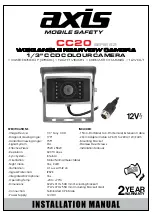
Extremely Dark Backgrounds:
In the illustration at left, a
relatively light subject is being photographed against a very card
background. Here again, taking a "close-up" reading, holding or
locking that reading, then going back to the desired position and
taking the picture, will automatically provide a professional
close-up exposure reading and a perfectly-exposed picture. As
soon as you release the shutter button, the meter resumes
continuous operation so there's nothing to set or re-set.
4.butkus.org
Sometimes, of course, it's not possible to approach the subject for a close-up reading: if this is the case, you can
easily compensate by temporarily re-setting your camera's ASA rating If you're working with ASA 64 film,
resetting the film speed to ASA 32 will provide one f/stop(100%) more exposure; resetting it to ASA 125 will
provide one f/stop
less
exposure. In extreme cases, lower or higher adjustments will porduce proportionately
greater compensation. Remember, however, to return the ASA indicator to the actual film speed after you've
completed the picture.
Summary:
extra compensation as outlined above is suggested only when the subject is (because of lighting or
surroundings) much lighter or darker than the balance of the scene. In these conditions, the small extra effort
described will reward you with even better exposures.
· Hold the Camera securely - comfortably for your hand
One secret for getting ultra-sharp pictures is to prevent accidental camera movement. To do this it is suggested
that you hold the camera firmly, as shown in the picture above, cradingthe body of the Autoreflex-A3 against
the face. Depress the shutter release button firmly but gently. Do not punch the shutter release button but
squeeze the exposure off smoothly for "jar-free" operation.
Vertical shots add variety to a series of pictures. They are especially desirable when making head and shoulder
portraits and architectural shots. Hold the camera as shown above. This position prevents accidentally pushing
the lens release button.










































